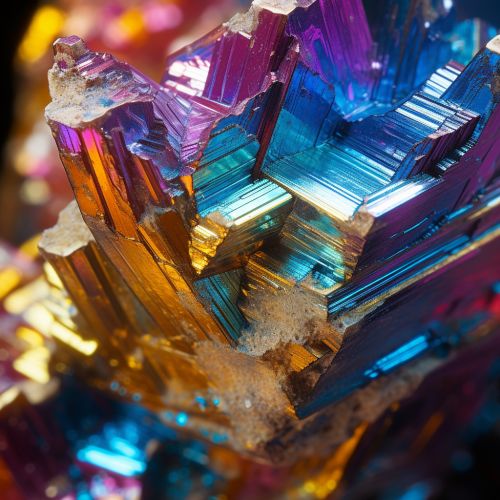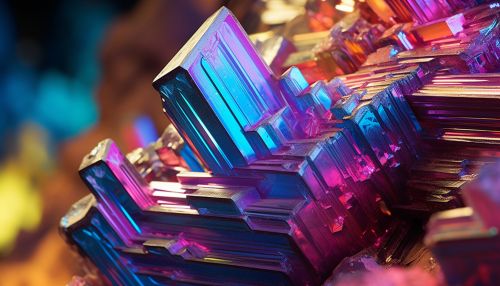Bismuth
Introduction
Bismuth is a chemical element with the symbol Bi and atomic number 83. It is a pentavalent post-transition metal and one of the pnictogens with chemical properties resembling its lighter group 15 siblings arsenic and antimony. Elemental bismuth may occur naturally, although its sulfide and oxide form important commercial ores. The free element is 86% as dense as lead. It is a brittle metal with a silvery white color when freshly produced, but surface oxidation can give it an iridescent tinge.
History
Bismuth was discovered by an unknown alchemist around the 15th century. The element was confused in early times with tin and lead due to its resemblance to those elements. Bismuth has been known since ancient times, although it was often confused with lead and tin, which share some physical properties. The name bismuth dates from around the 1660s, and is of uncertain etymology. It probably comes from the German words 'weis masse' or 'wismuth' ("white mass"), translated in the mid-sixteenth century to New Latin 'bisemutum' or 'bismuthum'.
Characteristics
Bismuth is a brittle metal with a white, silver-pink hue, often with an iridescent oxide tarnish showing many colors from yellow to blue. The spiral, stair-stepped structure of bismuth crystals is the result of a higher growth rate around the outside edges than on the inside edges. The variations in the thickness of the oxide layer that forms on the surface of the crystal cause different wavelengths of light to interfere upon reflection, thus displaying a rainbow of colors. When burned in oxygen, bismuth burns with a blue flame and its oxide forms yellow fumes.


Compounds
Bismuth forms a number of compounds, the most common of which is bismuth subsalicylate, the active ingredient in medications like Pepto-Bismol. This compound is used to treat upset stomach and is a chelate that can bind to certain types of toxins. Other compounds include bismuth oxide, bismuth subnitrate, and bismuth sulfide. Bismuth compounds are used in cosmetics, pigments, and a few pharmaceuticals.
Applications
Bismuth has a number of uses, including as a component in fire detection systems, in fire extinguishers, and in electrical fuses. It is also used in the manufacture of low melting solders and fusible alloys as well as in medicines. In recent years, bismuth has been used as a replacement for lead in solders and bullets due to concerns about lead's toxicity.
Health and environmental effects
Bismuth is considered to be free of toxicity in most cases, but it may still be harmful if massive amounts are ingested, as any heavy metal would be. Because it is heavy, it is often found in the environment in small amounts due to human activity. It is considered one of the less harmful heavy metals for human and environmental health.
